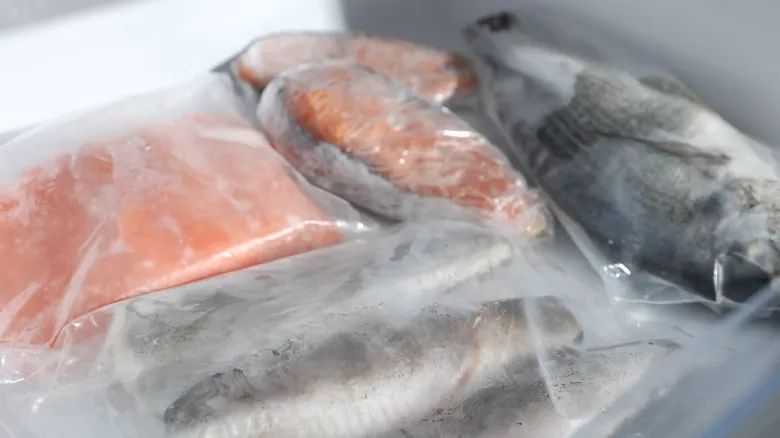How to glaze your fish at home

Ice glazing is a popular technique often utilized in professional kitchens, but it's also something you can easily do at home using a few different methods. The most straightforward approach is to rinse your fish filets in cold, salted water with ice to eliminate any excess slime. Next, place the fish in a plastic bag filled with cold water, submerge it, seal the bag tightly, and store it in the freezer. While this isn't the traditional glazing method, it allows you to replicate the process at home with minimal effort. Another simple technique involves dipping the fish in cold water, placing it on a sheet pan in the freezer, and allowing the water to freeze. You can repeat this process until a nice, ¼-inch thick glaze forms around the fish before sealing it in a bag.
A proper ice glazing technique requires a bit more time and effort. Similar to brining, pretreating your fish can enhance its flavor and protect it. The pretreatment method varies depending on the type of fish. For fattier fish like salmon, a 20 to 30-second dip in a mixture of ascorbic acid and water is recommended, while leaner varieties like cod or tuna can simply be dipped in salt water for the same duration. After pretreating, you can proceed with the ice glazing on your sheet pan and store the fish in a bag. Regardless of whether you choose to take this extra step, glazing is definitely a technique worth trying.
Recommended

The One Frozen Veggie Vegans Should Always Have In The Freezer

The Best And Worst Types Of Meat To Cook In The Air Fryer

How Long Can You Safely Leave Your Groceries In The Car?

The Worst Mistake You Can Make When Storing Butter
Next up

